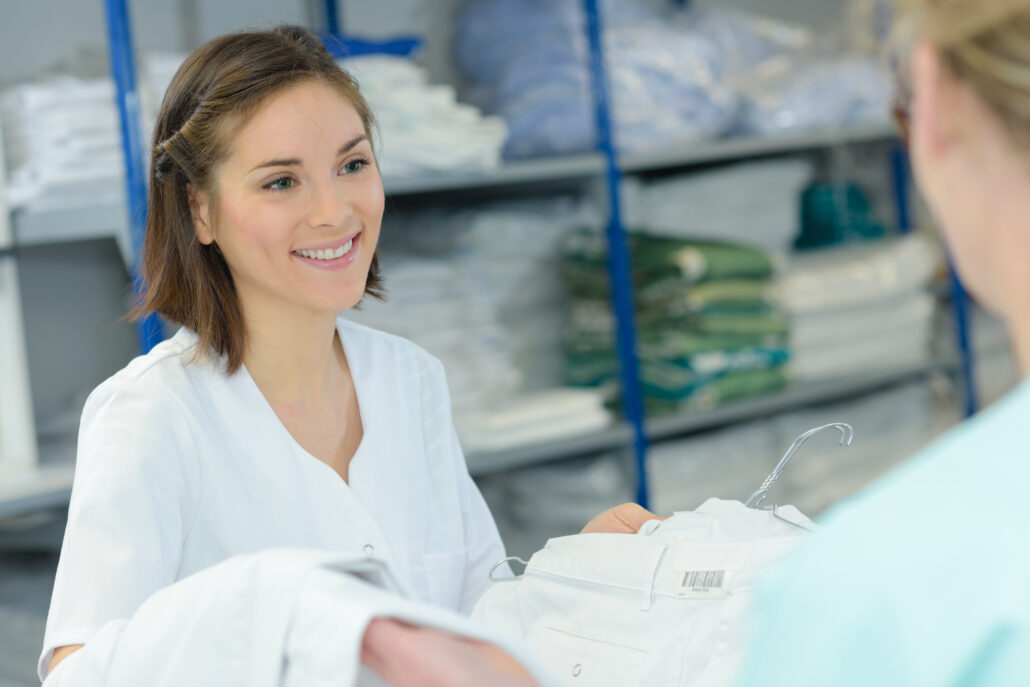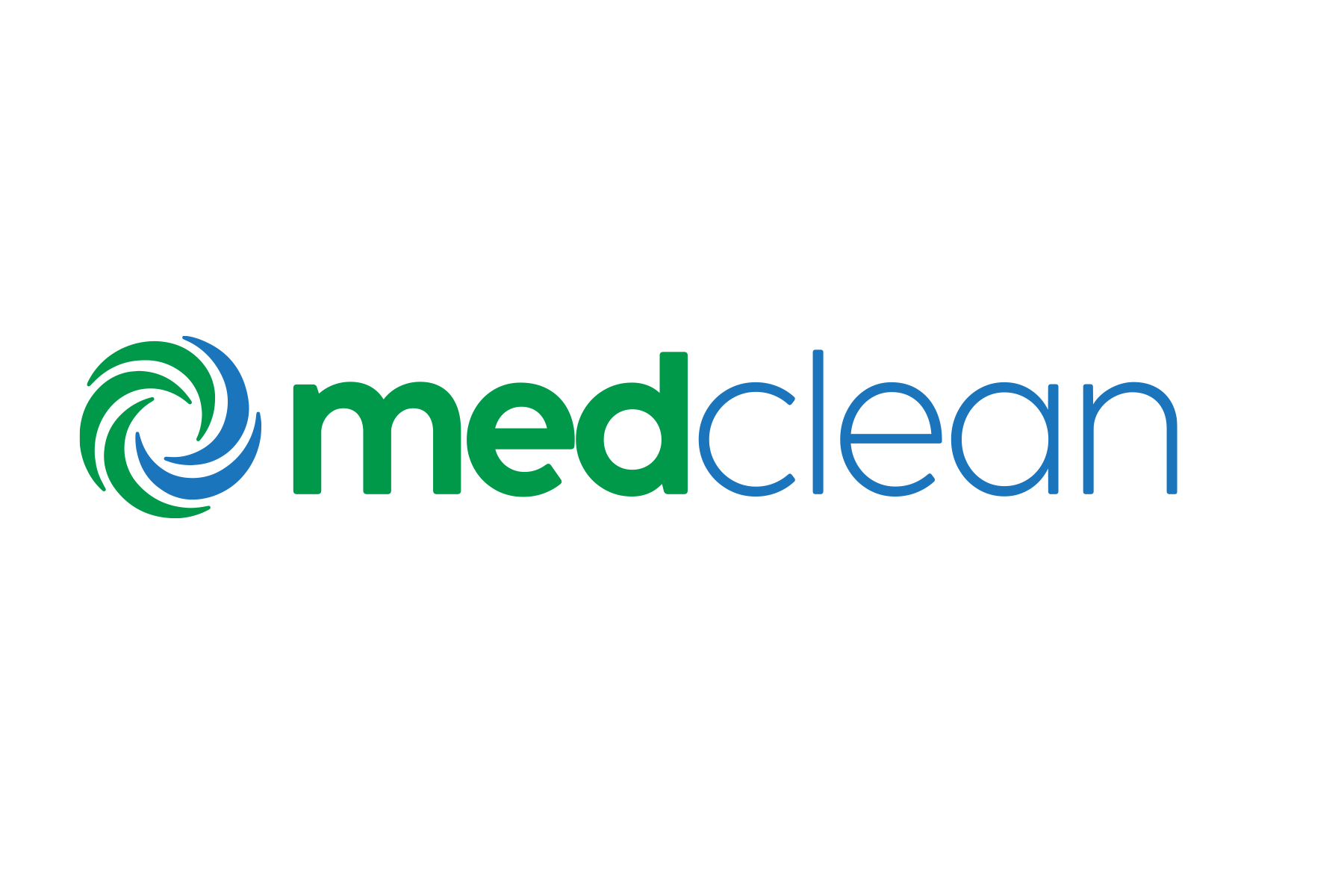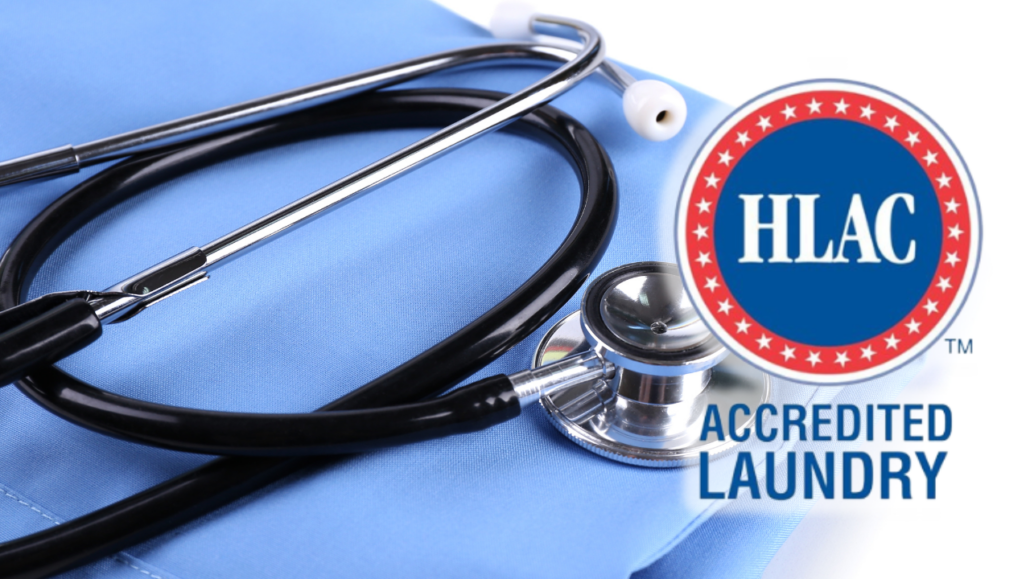As anyone in healthcare knows, the field provides a dynamic and demanding environment where every staff member plays a key role. One key area for medical facilities is maintaining stringent safety protocols. This is more than just a regulatory requirement—it is a fundamental necessity. Adherence to these protocols depends on the health and well-being of patients and the morale and efficiency of staff hygiene.
One overlooked yet critical aspect of healthcare safety is the management of medical linens and uniforms. Whether linens and uniforms are laundered on-site, outsourced to professional laundry facilities, or sent home with staff to clean at home, the standards and processes involved play a pivotal role in infection control. As an HLAC-accredited (Healthcare Laundry Accreditation Council) laundry, we have much to say on this matter.
In this article, we will delve into the importance of safety protocols in healthcare, the risks associated with improper laundering, and the invaluable role that HLAC accreditation plays in supporting infection control. We aim to equip you with the knowledge needed to make informed decisions about your laundering practices, ultimately ensuring the safety and well-being of all who enter your facility.
The Importance of Safety Protocols in Healthcare Facilities
At the very heart of delivering great healthcare are safety protocols that safeguard the health of patients and staff. These protocols encompass a comprehensive range of practices, from stringent hand hygiene and sterilization procedures to meticulously managing medical linens and uniforms. In healthcare settings, where infections can easily spread, maintaining these protocols is more than a best practice—it’s an imperative.
Safety culture & HAIs maintain a deep, inverse connection, recently demonstrated through research from Columbia University School of Nursing in NYC. Researchers found a clear link between positive safety culture and adherence to standard precautions, including hand hygiene, PPE use, and proper disposal of all sharps tools, to the risk of blood-borne and other infections in healthcare workers and patient HAIs. So, how do your laundry practices come into the equation?
Medical linens and uniforms, used daily by healthcare professionals and patients alike, are potential vectors for infection if not handled and laundered correctly. Proper laundering protocols are essential to ensure these items remain hygienically clean and safe. Facilities that handle laundering on-premise may benefit from direct control over the process. However, this also means they bear full responsibility for maintaining high standards and adhering to rigorous hygiene practices. On the other hand, when healthcare staff take their uniforms home for cleaning, the facility loses oversight and control over the laundering process. This can lead to inconsistencies in hygiene standards, increasing the risk of cross-contamination and infection. With standardized laundering practices, infection control measures can be protected.
This is where HLAC (Healthcare Laundry Accreditation Council) accreditation becomes invaluable. HLAC-accredited laundry services are certified by a third party to meet the highest cleanliness and safety standards, ensuring that every step of the laundering process, from handling and sorting to washing and delivery, adheres to stringent guidelines. By partnering with an HLAC-accredited laundry service, healthcare facilities can significantly enhance their infection control efforts, ensuring that all linens and uniforms are treated to the highest hygienic standards. For facilities that manage on-site laundering, it’s a good idea to learn about HLAC standards. Striving to meet them can provide a robust framework for improving on-site laundering processes, which can help these facilities achieve consistent cleanliness and safety, thereby protecting patients and staff from potential infections.
Some questions to consider as you match your laundry practices against your safety protocols:
- How does your facility currently handle all protocols?
- Is there a laundry protocol, and is it a mixed system?
- Are there areas of improvement?
Risks of Improper Medical Laundering
When medical linens and uniforms are not cleaned adequately, they become vehicles for transmitting harmful pathogens, leading to increased rates of hospital-acquired infections (HAIs). Understanding and mitigating these risks is crucial for maintaining a safe healthcare environment.
Major Risks of Improper Medical Laundering
- Spread of Infections: Insufficient laundering can leave behind dangerous pathogens such as bacteria, viruses, and fungi on medical linens and uniforms. This can lead to the spread of infections, increasing the incidence of HAIs and putting both patients and staff at risk.
- Cross-Contamination: Improper handling and sorting of dirty and clean linens can result in cross-contamination. Clean linens can become contaminated by contact with soiled items, negating the cleaning process and posing a serious health risk.
- Inadequate Disinfection: Failure to use the correct temperatures, detergents, and disinfectants can result in incomplete disinfection. Pathogens may survive the laundering process, remaining active and capable of causing infections.
- Chemical Residue: Residual chemicals from detergents and disinfectants can remain on linens if not properly rinsed. These residues can cause skin irritations, allergic reactions, and other health issues for patients and staff.
- Loss of Textile Integrity: Frequent improper laundering can weaken the fibers of linens and uniforms, causing them to deteriorate quickly. Worn-out textiles are less effective in protecting patients and staff, leading to potential safety hazards.
- Inconsistent Hygiene Standards: Inconsistent or improper laundering can result in varying levels of cleanliness. For example, when staff take uniforms home for laundering, hygiene standards can’t be monitored and, therefore, are not controlled, despite any best intentions the employees may have in caring for their own uniforms.
By recognizing and addressing these risks, healthcare facilities can improve their laundering practices, whether managed on-site or outsourced to professional services. Are you confident in your current laundering practices? Have you experienced issues with linen and scrub cleanliness? Partnering with HLAC-accredited laundry services or striving to meet HLAC accreditation standards in on-site operations ensures that medical linens and uniforms are hygienically clean, safeguarding the health of everyone in the facility.
Understanding HLAC Accreditation
HLAC accreditation is awarded to laundry services that adhere to rigorous standards and protocols to ensure the utmost hygiene. These standards cover every aspect of the laundering process, from the initial handling and sorting of soiled items to the washing, drying, and delivering clean linens and uniforms. The accreditation process involves thorough inspections and ongoing compliance checks to maintain these high standards.
Key Benefits of Choosing an HLAC-Accredited Laundry
- Enhanced Infection Control: HLAC-accredited laundries follow strict guidelines that significantly reduce the risk of infection. By ensuring linens and uniforms are hygienically clean, these services help prevent the spread of HAIs, protecting both patients and staff.
- Consistent Quality: Accredited laundries adhere to consistent and standardized procedures. This guarantees that all items meet high hygiene standards and provides reliable protection against contamination.
- Advanced Technology and Techniques: HLAC-accredited laundries employ advanced washing technologies and techniques. These innovations enhance the effectiveness of laundering and ensure thorough cleaning and disinfection.
- Compliance with Regulatory Standards: Accredited laundries meet or exceed regulatory requirements for healthcare laundry services. Facilities can be confident that their laundering practices comply with industry regulations, reducing legal and compliance risks.
- Improved Patient and Staff Satisfaction: High-quality, hygienically clean linens contribute to a safer and more comfortable environment. This leads to higher satisfaction levels among patients and staff, enhancing the overall reputation of the healthcare facility.
How HLAC-Accredited Laundering Supports Infection Control
With infection control so central to patient safety and care, the laundering of medical linens cannot be ignored. These items are in constant contact with patients and staff and, if not properly cleaned, can easily become the prime suspect for an HAI.
HLAC accreditation signifies that a laundry service adheres to stringent guidelines and protocols for effective infection control. These guidelines cover every aspect of the laundering process, ensuring that linens and uniforms are visibly clean and hygienically sanitized. The rigorous procedures include high-temperature washes, appropriate chemical disinfectants, and meticulous handling and storage practices. Each step is designed to eliminate pathogens and prevent contamination, ensuring that clean items do not come into contact with soiled ones.

Adhering to HLAC accreditation standards, accredited laundries provide a level of cleanliness that significantly lowers the risk of infection. This is particularly important in critical care environments, where patients are most vulnerable. The advanced technologies and processes used by accredited laundries, such as barrier washing systems and validated disinfection protocols, ensure that even the most resistant pathogens are effectively eradicated. In addition, because of regular inspections and ongoing testing, an HLAC-accredited laundry can ensure greater consistency in the quality of linens and uniforms coming from the facility. Every batch of linens and uniforms must meet the same rigorous hygiene criteria. By contrast, non-accredited laundries and home laundering by staff can result in variable cleanliness levels, adding complications that can compromise your infection control efforts.
Choosing the Right Laundry Program for Your Facility
No matter what you decide to do, we all know that choosing how to handle your laundry is a crucial decision. Whether you’re considering a HLAC-accredited laundry or managing it on-site, several key factors should be considered when reviewing your processes:
- Quality & Consistency: Is your chosen system providing you with the quality and consistency you want when managing your facility?
- Technology & Processes: What technologies or processes are within the system, and what are your disinfection protocols?
- Compliance with Regulatory Standards: Is your program compliant with all relevant regulations, including those set by the CDC and other health authorities?
- Cost and Value: How much does your current program cost, whether you operate in-house or use a third-party laundry? This is a great time to evaluate the cost-effectiveness of the laundry service. Consider both the price and the value provided, including the quality of your linens and scrubs, reliability, and additional benefits such as accreditation and advanced technologies.
Of course, we at MedClean are biased in suggesting that working with a proven HLAC-accredited laundry partner is the best option. By partnering with an HLAC-accredited laundry service, such as MedClean, medical facilities can significantly enhance their infection control efforts, ensuring that all linens and uniforms are treated to the highest hygienic standards.
HLAC-accredited laundering services provide an essential layer of protection against the spread of infections in healthcare settings. By ensuring that medical linens and uniforms are hygienically clean, these services support robust infection control measures and contribute to the overall health and safety of patients and staff. Healthcare facilities should prioritize HLAC accreditation, whether through external services or by implementing these standards in on-site laundering operations, to ensure the highest levels of cleanliness and safety.

